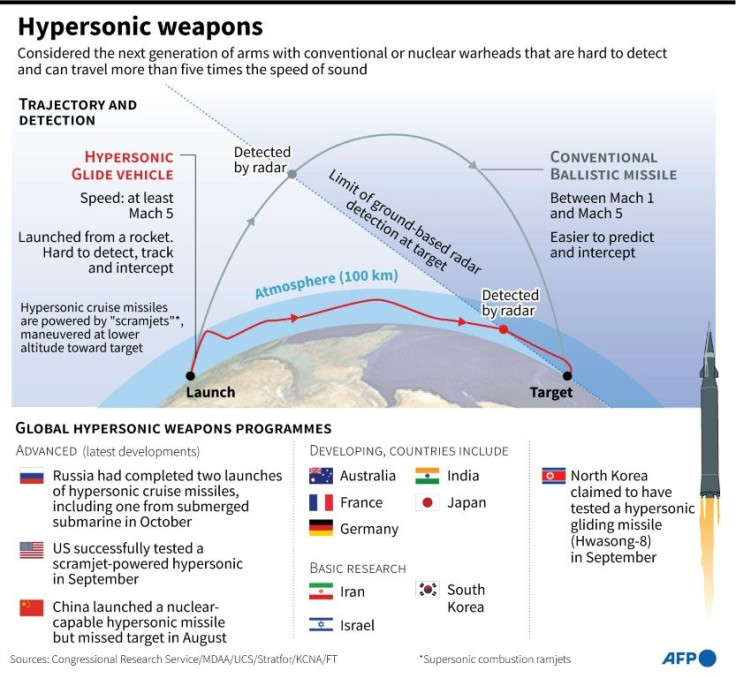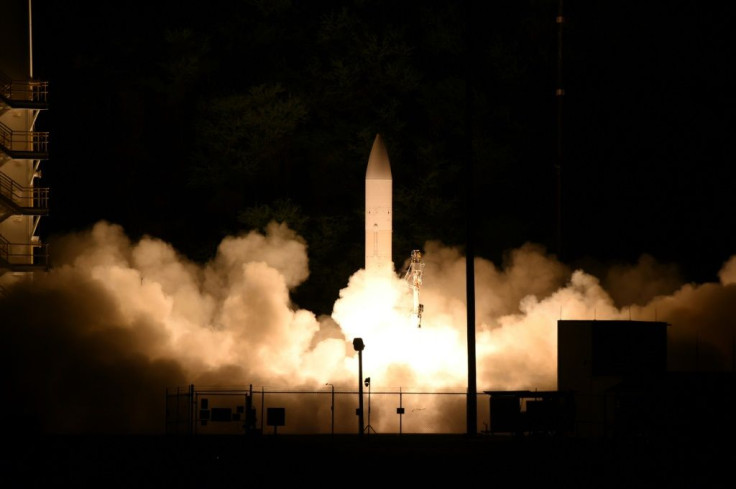US 'Very Concerned' Over China's Hypersonic Test
The United States is "very concerned" about China's hypersonic missile tests, US disarmament ambassador Robert Wood said Monday, after reports that Beijing launched one with a nuclear capacity in August.
On Saturday, the Financial Times reported that China had launched a hypersonic missile that completed a circuit of the planet before landing, missing its target.
"We are very concerned by what China has been doing on the hypersonic front," said Wood, who next week steps down from his post in Geneva after seven years.
Hypersonic missiles, like traditional ballistic missiles, can fly more than five times the speed of sound (Mach 5). But they are more manoeuvrable than their ballistic counterparts and only need a low trajectory in the atmosphere, making them harder to defend against.

China on Monday insisted on Monday that the test was a routine one for a spacecraft rather than a missile.
But Wood said Monday that Russia also had hypersonic technology and while Washington had held back from developing a military capacity in this field, they now had no choice but to respond in kind.
"If you're a country that's the target of that, you're going to want to figure out a way to defend yourself from that," he said.
"And so we start looking at what other applications and defensive applications, can you bring to hypersonic technology -- and so that continues to things to accelerate the arms race."

The US was also concerned about China's rapid development of its strategic nuclear force, Wood added.
The United States is already working on adding hypersonic missiles to its arsenal.
Darpa, the US army's scientific wing, recently announced successful tests of what it called a HAWC missile (Hypersonic Air-breathing Weapon Concept). The missile uses oxygen in the atmosphere as part of its fuel.
It is also developing a hypersonic glider, known as ARRW (pronounced "arrow"), but its first major test in April ended in failure.
China unveiled a hypersonic medium-range missile, the DF-17, in 2019, which can travel around 2,000 kilometres and can carry nuclear warheads.
The missile mentioned in the FT story is a different one, with a longer range. It can be launched into orbit before coming back into the atmosphere to hit its target.
Russia recently launched a hypersonic missile, the Zircon, from a submarine, and since late 2019 has had the hypersonic nuclear-capable Avangard missiles in service. The Avangard can travel at up to Mach 27, changing course and altitude.
© Copyright AFP {{Year}}. All rights reserved.





















